Neale Sourna's Blog, page 11
September 4, 2015
A Practical Guide to Game Writing By Darby McDevitt
A Practical Guide to Game WritingBy Darby McDevitt
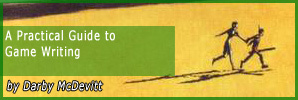
[In this detailed Gamasutra feature, veteran game writer McDevitt (Assassin's Creed: Bloodlines, Where the Wild Things Are) outlines useful processes for collaboration between design, production and writing staff, from pre-production through production of a game.]
Video game writers are a frequently misunderstood sort. Even in the most ideal situations, we are often relegated to the status of mortar to the designers' bricks, slipping between the cracks to paste fun moments of gameplay together with a few lines of snappy, expository dialog.
Writers can be further marginalized by a lingering sense among our team members that we want nothing more than to stuff our games full of melodramatic, Metal Gear-sized cutscenes, burdened by a cast of dozens sputtering flowery lines from our 450 page script.
I'd like to steer us clear of this idea, one likely sustained by the apparent misconception that writing is fundamentally about arranging words into meaningful strings.
Clearly this isn't the case, but somehow a large contingent of the game industry has institutionalized this attitude anyway, and its effects can be found in an upsetting number of games released in the past few decades.
Just count the uneasy puns and strained moralizing spilling from your favorite avatar's mouth -- when a writer is hired to write a game, and is subsequently barred from having input into its pacing, its setting, the motivations of its characters, and its mood and tone, writers resort to the only weapons they have left: wry witticisms and declarative pop-philosophy.
The spirit of collaboration games are supposed to embody often seems well outside the writer's reach.
But the truth is, we don't want to hijack your game with pointless soliloquies, and we don't want to write a posturing Hollywood-style epic. Game writers simply want to help designers craft an immersive, interactive narrative experience. With or without dialog, with or without characters, we simply want the game to start somewhere interesting, climb its way over a few emotional peaks, and end somewhere even more interesting. We're good at that sort of thing too.
Not all games require a narrative arc, of course, but it's a rather common feature of quite a few mainstream console titles, and these days if an actual writer is going to pen the script of one of these games -- as opposed to the lead designer or the producer -- some Very Important People probably have a Very High Opinion of the property.
But this doesn't happen as frequently as you might think. Consider yourself blessed if you have actually seen a game writer in the wild, for they remain one of those elusive, added-expense luxuries that many game producers -- their eyes always on their margins -- believe they can do without. And in many cases, it humbles me to say, they're right.
The average game-playing public will suffer a deluge of poor storytelling if a game is knock-down, drag-out fun. But a great story with terrible gameplay will die a fast and lonely death on the shelf. I respect and support this pecking order. Gameplay must come first -- this is the golden rule.
However, if some form of narrative happens to play a design-critical role in your proposed game, it is vitally important to treat it exactly as you would any other design element, not as a separate discipline. So if your team has taken that bold extra step to build a narrative-driven game, there are a number of precautions you can take to accommodate the writer and prevent the story (and your writer) from getting buried beneath endless revisions of your GDD.
First and foremost among these is to make one simple conceptual change: treat your writer as an associate designer. Involve her in the design process from the outset. Even if she is not an experienced technical designer, a good writer can be instrumental in helping inspire unique moment-to-moment experiences that provide gameplay variety while integrating seamlessly into the narrative.
Again, writing is not just about clever sentences -- it can also be about narrative shape, motivation, and pacing, i.e. what you do, why you do, and when you do.
 Most of my favorite narrative-driven games contain very little dialog in them at all -- Ico, Shadow of the Colossus, Flashback, Out of this World -- but even these titles are "written" in the sense that they have a clear set of emotional shifts, tonal changes, and meaningful moment-to-moment events that compound into emotional pay-offs.
Most of my favorite narrative-driven games contain very little dialog in them at all -- Ico, Shadow of the Colossus, Flashback, Out of this World -- but even these titles are "written" in the sense that they have a clear set of emotional shifts, tonal changes, and meaningful moment-to-moment events that compound into emotional pay-offs.
When writers and designers band together and discuss a game's story, characters, dramatic set-pieces, and settings in parallel with ideas about the game mechanics and levels, the team will begin to find exciting and creative ways of conjoining the two disciplines into a more unified experience.
Unfortunately, this synergy can be difficult to find, especially in the trenches of third-party development where the average dev cycle is less than a year. When schedules are tight, producers and designers often maintain a slight distance from writers, imagining we are off "doing our thing" while they do theirs.
But our thing is their thing too. Writing is design. We are both building a world from scratch, after all. So if you empower a writer to absorb and occasionally contribute design ideas, she will carry on with a solid understanding of how the narrative elements contribute to (or detract from) the overall game experience.
Before Writing BeginsFor a clearer picture of this process, let's pinpoint a game writer's most critical early-milestone tasks, beginning with a few pre-production goals. In these early weeks, it's easy to get drunk on a thousand and one ephemeral ideas -- by all means do -- but you'll need to conclude this reverie with a few tangible results:
High Level Narrative Summary. During preproduction, the design team should work directly with the writer to concoct a brief (one to four pages) high-level summary of the primary story. Think of it as your elevator pitch: make it succinct and snappy. This short piece is probably the only story document most of the team will ever read, so it should be clear and compelling.
Do this early, and get the client to sign off on it as soon as humanly possible. Read that previous sentence again. Get quick client sign-off every step of the way. Failure to guide your client to a swift agreement on the story may result in endless misery for the remainder of the project.
Major Locations / Levels. This is one area where writers can really get sore if they are left out of the conception process. Designers frequently forge ahead with level concepts and designs without consulting the writer, not taking into account the huge role that setting plays in crafting an interesting narrative.
In video games, place is often more important than character, so this is doubly important. If the writer, designers, and artists band together to nail down the scope of the game's environments, and get a rough idea of how much is needed and how much is feasible, everyone will walk away happy.
This cuts all ways: writers need to know that they'll have the locations they need to tell a good story, while the artists and designers will want to make sure the writer is asking for content that is relevant to gameplay.
Obviously this "relevance threshold" varies with the size of the project, but on small projects with short schedules getting this right can mean the difference between environment artists going home at 6 pm or 6 am the next morning.
Once production begins, the writers work ramps up. This is the point where the entire design team needs to function as a single unstoppable force (for good):
A Detailed Story Outline. With the narrative arc complete, it's time to produce an exquisitely detailed story document, complete with scene descriptions and gameplay objectives. The amount of detail in this doc will vary according to how much the story influences the design, but it should be as thorough as possible. In any case, generating a detailed outline will give you an early understanding of just what sort of game you're making, and how reliant on the writer you will be for design iteration down the road.
In the case of heavily plot-driven games, the design challenges will stem directly from the story -- e.g. rescue a prisoner, assassinate a guard, courier a package. For non-linear games like RPGs this document should be incredibly dense and detailed. For less structured games, the writer's direct impact on the design may be minimal. Understanding this balance ahead of time is critical.
 Story Presentation Plan. How, exactly, is the game's story being told, and who is responsible for telling it? Do you have pre-rendered cutscenes or in-engine cutscenes? Who will be putting these scenes together? Perhaps you have no cutscenes whatsoever, and would like to tell your story on-the-fly. Is this feasible? Possible?
Story Presentation Plan. How, exactly, is the game's story being told, and who is responsible for telling it? Do you have pre-rendered cutscenes or in-engine cutscenes? Who will be putting these scenes together? Perhaps you have no cutscenes whatsoever, and would like to tell your story on-the-fly. Is this feasible? Possible?
Figure it out early.
Nothing is more frustrating for a writer than seeing a project scoot forward without anyone having a firm understanding about how the story will be told, since this will affect what she intends to write.
Estimated Cut-Scene Breakdown. If your game does contain cutscenes or animated in-game sequences of any kind, it is crucial to estimate their number very early on to get a good sense of the work to come. If you have a detailed story outline, this should be easy. On tight projects it also helps to determine ahead of time what the expected intricacy and quality of each scene is so your teams can allocate their resources appropriately.
Characters. As you generate your detailed story arc, you'll need to make a clear list of the number of characters needed. Who are these people, and what roles do they play in both the narrative and the gameplay? Which are simple NPCs? Which are robust, interactive characters? Which are bosses? Mission givers? Shop keepers? Tutorial mentors? Et cetera.
The artists will be generating all character models and animations, and they'll want to know the scope as soon as possible. If you spring 15 new NPCs on your artists halfway through the project, they will shank you in the break room -- believe it. Getting the character scope nailed down early will also help you determine how much "incidental dialog" the game will require, for these throwaway lines frequently take up as much space in the script as the main story dialog. This is no trivial amount, so keep close track of it.
Sort Out Your Text Database. This can be a tedious task, but it is crucial to sort out your text pipeline very early, and get your tools up and running. The longer you wait, the more you will hate yourself. Some games have complex or esoteric text requirements -- non-linear conversation systems, for instance -- so it is critical that you organize your data cleanly and clearly.
Also, take a moment to decide how the script will be delivered. Not all writers are familiar with the esoteric architecture of your text database, so if your writer is delivering the script in Word or Final Draft, you're going to need a pipeline to handle its transfer.
When Writing BeginsOnce your game's foundation has been laid and the team is ready to start production, the actual writing can begin. This is the fun part. Writers love to write, but without constant contact with the design team, they run the risk of giving you more script than you need, or a script you don't need at all. This wastes everyone's time and makes the writer sad when you have to tell him, "as beautiful as they are, your 100 part limerick-cycle has no place in Chaz Dastard's Intergalactic Star Safari 2: Misremembered Legacy".
Nip your writer's graphomania in the bud by establishing clear boundaries. This should be simple if the writer has been involved in the design from the beginning, since all parties involved will understand the extent of the game's writing needs. Keep track of everything before it needs to be written, as it is being written, and after it has been written. A game writer without defined boundaries or direction -- especially an off-site, contracted writer -- runs the risk of writing something as sensible and useful to your game as Andre Breton's Soluble Fish.
Script, First Draft. Between the greenlight and first milestone, the writer should be busy as hell. On short projects, ideally she should have a finished first draft of the script by the first production milestone, as this will help the level design process move smoothly.
On longer projects, the writer and level designers will be working back and forth quite a bit to make sure neither one lets a detail slip, edging ever closer to a first draft.
Demand Story and Script Sign-Off, Again. Be crystal clear with your client: the script needs to be read and comments forthcoming as soon as possible. Of all the client-side headaches I have ever encountered, this is the most painful.
Many clients make the mistake of believing the script is the single most important aspect of their game, and therefore spend months and months poring over details that contribute very little to the final game experience. Delays of this sort can hold up level designers and cutscene artists in the most asinine ways imaginable, wasting time that cannot be easily recovered.
One little discussed benefit to hiring an experienced writer is the fact that, relative to coders and artists, good writers work incredibly fast. Text is cheap and takes very little time to edit and revise. But this advantage is of no use to anyone if writers aren't aware that anything needs revising.
I have lost count off the number of times a seemingly innocuous level design change or map layout has rendered a chunk of my dialog obsolete. When I have not been made aware of this chance, the resulting headache cannot be cured by earthly medicine.
Darby: Listen to this gem, guys: "Sally forth to yonder Black Forest, stalwart Wayfarer, for there you shall find a crystal dagger of such rare-"
Producer Person: Ah, Darby, sorry... the Black Forest was scrapped and replaced by a Walmart. We should have told you.
Darby: Ah... okay, hold on. Where's my pen?
Woe betide the team that discovers this incongruity only after the actors have recorded all of their dialog. Again, keep the writers and designers partnered at all times.
Into ProductionNow you're well into production, and the heavy lifting has begun. If you have nailed all the earlier tasks, the rest of production should proceed smoothly, barring any client interference. This is supposed to happen only if you've been naughty, but the unfortunate truth is not so black and white.
There are more than a few imposing clients out there who, for understandable if not always sensible reasons, believe the story can be endlessly revised up until Beta. So be wary, keep calm, and carry on.
At some point during production, the script will be finished and the writer will feel like she is nearing the finish line far before the rest of the team. Don't let this illusion persist. There is still a bit of work your writer can help you with:
Casting. If you are recording with actors (and who isn't, these days?) now is the time to figure out who will be making your characters speak. On small projects that don't have an official story director, the writer can be of immense help. It's crucial to get your casting done well in advance of your recording date. Actors have hectic schedules and you'll find all the best ones rather busy if you try to snag a few the week of your recording session.
Final Script. As difficult as it is, the writer will have to stop tweaking her dialog and settle on something. Of course, it's a good idea to encourage the writer to streamline what she can. The script may be laden with timely wit and wisdom, but it is still, above all else, a game script and if it tests a player's patience, that can be a problem.
More to the point: the longer the script, the more time it will take the cinematics team to craft the cutscenes or scripted sequences. So when the writer buckles down and kills her darlings early, it keeps everyone from doing superfluous work.
Voice-Over Recording Sessions. Some writers make great VO directors; some don't. But all good ones should be able to re-write their dialog on-the-fly, so make sure your scrivener is available for the recording sessions. When she hears her dialog spoken aloud for the first time, she's probably going to want to change it. Allow some leeway, but don't let her get carried away. Try to limit changes only to what is egregious or erroneous.
Once you hit Alpha, the writer's job gets a lot easier. But there are still a number of good reasons to keep one around, locked in a cabinet somewhere, just in case.
Proofreading. Writers should never copyedit and proofread their own work, it's true. This is a fact that holds doubly true in the game industry where the volume of text written is often comparable to that of a novel. On the other hand, it's rare to find excellent proofreaders hiding in the QA department, so make sure as many eyes are on the text as possible, including the writer's.
Non-Dialog Text Revisions. It can take a long time to nail down all that tutorial, database, and menu text your game has accrued slowly but consistently over the span of the production. Lucky for you, text is cheap to implement and fix, and is quite safe to alter even up to the last minute (provided you're still proofreading).
And with that, your writer's job is finished and your game is nearly complete. Well done, folks. Take a breath and clean your white board. The whole process starts again in five... four... three... two... one...
Return to the full version of this article
Copyright © 2015 UBM Tech, All rights reserved

[In this detailed Gamasutra feature, veteran game writer McDevitt (Assassin's Creed: Bloodlines, Where the Wild Things Are) outlines useful processes for collaboration between design, production and writing staff, from pre-production through production of a game.]
Video game writers are a frequently misunderstood sort. Even in the most ideal situations, we are often relegated to the status of mortar to the designers' bricks, slipping between the cracks to paste fun moments of gameplay together with a few lines of snappy, expository dialog.
Writers can be further marginalized by a lingering sense among our team members that we want nothing more than to stuff our games full of melodramatic, Metal Gear-sized cutscenes, burdened by a cast of dozens sputtering flowery lines from our 450 page script.
I'd like to steer us clear of this idea, one likely sustained by the apparent misconception that writing is fundamentally about arranging words into meaningful strings.
Clearly this isn't the case, but somehow a large contingent of the game industry has institutionalized this attitude anyway, and its effects can be found in an upsetting number of games released in the past few decades.
Just count the uneasy puns and strained moralizing spilling from your favorite avatar's mouth -- when a writer is hired to write a game, and is subsequently barred from having input into its pacing, its setting, the motivations of its characters, and its mood and tone, writers resort to the only weapons they have left: wry witticisms and declarative pop-philosophy.
The spirit of collaboration games are supposed to embody often seems well outside the writer's reach.
But the truth is, we don't want to hijack your game with pointless soliloquies, and we don't want to write a posturing Hollywood-style epic. Game writers simply want to help designers craft an immersive, interactive narrative experience. With or without dialog, with or without characters, we simply want the game to start somewhere interesting, climb its way over a few emotional peaks, and end somewhere even more interesting. We're good at that sort of thing too.
Not all games require a narrative arc, of course, but it's a rather common feature of quite a few mainstream console titles, and these days if an actual writer is going to pen the script of one of these games -- as opposed to the lead designer or the producer -- some Very Important People probably have a Very High Opinion of the property.
But this doesn't happen as frequently as you might think. Consider yourself blessed if you have actually seen a game writer in the wild, for they remain one of those elusive, added-expense luxuries that many game producers -- their eyes always on their margins -- believe they can do without. And in many cases, it humbles me to say, they're right.
The average game-playing public will suffer a deluge of poor storytelling if a game is knock-down, drag-out fun. But a great story with terrible gameplay will die a fast and lonely death on the shelf. I respect and support this pecking order. Gameplay must come first -- this is the golden rule.
However, if some form of narrative happens to play a design-critical role in your proposed game, it is vitally important to treat it exactly as you would any other design element, not as a separate discipline. So if your team has taken that bold extra step to build a narrative-driven game, there are a number of precautions you can take to accommodate the writer and prevent the story (and your writer) from getting buried beneath endless revisions of your GDD.
First and foremost among these is to make one simple conceptual change: treat your writer as an associate designer. Involve her in the design process from the outset. Even if she is not an experienced technical designer, a good writer can be instrumental in helping inspire unique moment-to-moment experiences that provide gameplay variety while integrating seamlessly into the narrative.
Again, writing is not just about clever sentences -- it can also be about narrative shape, motivation, and pacing, i.e. what you do, why you do, and when you do.
 Most of my favorite narrative-driven games contain very little dialog in them at all -- Ico, Shadow of the Colossus, Flashback, Out of this World -- but even these titles are "written" in the sense that they have a clear set of emotional shifts, tonal changes, and meaningful moment-to-moment events that compound into emotional pay-offs.
Most of my favorite narrative-driven games contain very little dialog in them at all -- Ico, Shadow of the Colossus, Flashback, Out of this World -- but even these titles are "written" in the sense that they have a clear set of emotional shifts, tonal changes, and meaningful moment-to-moment events that compound into emotional pay-offs.When writers and designers band together and discuss a game's story, characters, dramatic set-pieces, and settings in parallel with ideas about the game mechanics and levels, the team will begin to find exciting and creative ways of conjoining the two disciplines into a more unified experience.
Unfortunately, this synergy can be difficult to find, especially in the trenches of third-party development where the average dev cycle is less than a year. When schedules are tight, producers and designers often maintain a slight distance from writers, imagining we are off "doing our thing" while they do theirs.
But our thing is their thing too. Writing is design. We are both building a world from scratch, after all. So if you empower a writer to absorb and occasionally contribute design ideas, she will carry on with a solid understanding of how the narrative elements contribute to (or detract from) the overall game experience.
Before Writing BeginsFor a clearer picture of this process, let's pinpoint a game writer's most critical early-milestone tasks, beginning with a few pre-production goals. In these early weeks, it's easy to get drunk on a thousand and one ephemeral ideas -- by all means do -- but you'll need to conclude this reverie with a few tangible results:
High Level Narrative Summary. During preproduction, the design team should work directly with the writer to concoct a brief (one to four pages) high-level summary of the primary story. Think of it as your elevator pitch: make it succinct and snappy. This short piece is probably the only story document most of the team will ever read, so it should be clear and compelling.
Do this early, and get the client to sign off on it as soon as humanly possible. Read that previous sentence again. Get quick client sign-off every step of the way. Failure to guide your client to a swift agreement on the story may result in endless misery for the remainder of the project.
Major Locations / Levels. This is one area where writers can really get sore if they are left out of the conception process. Designers frequently forge ahead with level concepts and designs without consulting the writer, not taking into account the huge role that setting plays in crafting an interesting narrative.
In video games, place is often more important than character, so this is doubly important. If the writer, designers, and artists band together to nail down the scope of the game's environments, and get a rough idea of how much is needed and how much is feasible, everyone will walk away happy.
This cuts all ways: writers need to know that they'll have the locations they need to tell a good story, while the artists and designers will want to make sure the writer is asking for content that is relevant to gameplay.
Obviously this "relevance threshold" varies with the size of the project, but on small projects with short schedules getting this right can mean the difference between environment artists going home at 6 pm or 6 am the next morning.
Once production begins, the writers work ramps up. This is the point where the entire design team needs to function as a single unstoppable force (for good):
A Detailed Story Outline. With the narrative arc complete, it's time to produce an exquisitely detailed story document, complete with scene descriptions and gameplay objectives. The amount of detail in this doc will vary according to how much the story influences the design, but it should be as thorough as possible. In any case, generating a detailed outline will give you an early understanding of just what sort of game you're making, and how reliant on the writer you will be for design iteration down the road.
In the case of heavily plot-driven games, the design challenges will stem directly from the story -- e.g. rescue a prisoner, assassinate a guard, courier a package. For non-linear games like RPGs this document should be incredibly dense and detailed. For less structured games, the writer's direct impact on the design may be minimal. Understanding this balance ahead of time is critical.
 Story Presentation Plan. How, exactly, is the game's story being told, and who is responsible for telling it? Do you have pre-rendered cutscenes or in-engine cutscenes? Who will be putting these scenes together? Perhaps you have no cutscenes whatsoever, and would like to tell your story on-the-fly. Is this feasible? Possible?
Story Presentation Plan. How, exactly, is the game's story being told, and who is responsible for telling it? Do you have pre-rendered cutscenes or in-engine cutscenes? Who will be putting these scenes together? Perhaps you have no cutscenes whatsoever, and would like to tell your story on-the-fly. Is this feasible? Possible?Figure it out early.
Nothing is more frustrating for a writer than seeing a project scoot forward without anyone having a firm understanding about how the story will be told, since this will affect what she intends to write.
Estimated Cut-Scene Breakdown. If your game does contain cutscenes or animated in-game sequences of any kind, it is crucial to estimate their number very early on to get a good sense of the work to come. If you have a detailed story outline, this should be easy. On tight projects it also helps to determine ahead of time what the expected intricacy and quality of each scene is so your teams can allocate their resources appropriately.
Characters. As you generate your detailed story arc, you'll need to make a clear list of the number of characters needed. Who are these people, and what roles do they play in both the narrative and the gameplay? Which are simple NPCs? Which are robust, interactive characters? Which are bosses? Mission givers? Shop keepers? Tutorial mentors? Et cetera.
The artists will be generating all character models and animations, and they'll want to know the scope as soon as possible. If you spring 15 new NPCs on your artists halfway through the project, they will shank you in the break room -- believe it. Getting the character scope nailed down early will also help you determine how much "incidental dialog" the game will require, for these throwaway lines frequently take up as much space in the script as the main story dialog. This is no trivial amount, so keep close track of it.
Sort Out Your Text Database. This can be a tedious task, but it is crucial to sort out your text pipeline very early, and get your tools up and running. The longer you wait, the more you will hate yourself. Some games have complex or esoteric text requirements -- non-linear conversation systems, for instance -- so it is critical that you organize your data cleanly and clearly.
Also, take a moment to decide how the script will be delivered. Not all writers are familiar with the esoteric architecture of your text database, so if your writer is delivering the script in Word or Final Draft, you're going to need a pipeline to handle its transfer.
When Writing BeginsOnce your game's foundation has been laid and the team is ready to start production, the actual writing can begin. This is the fun part. Writers love to write, but without constant contact with the design team, they run the risk of giving you more script than you need, or a script you don't need at all. This wastes everyone's time and makes the writer sad when you have to tell him, "as beautiful as they are, your 100 part limerick-cycle has no place in Chaz Dastard's Intergalactic Star Safari 2: Misremembered Legacy".
Nip your writer's graphomania in the bud by establishing clear boundaries. This should be simple if the writer has been involved in the design from the beginning, since all parties involved will understand the extent of the game's writing needs. Keep track of everything before it needs to be written, as it is being written, and after it has been written. A game writer without defined boundaries or direction -- especially an off-site, contracted writer -- runs the risk of writing something as sensible and useful to your game as Andre Breton's Soluble Fish.
Script, First Draft. Between the greenlight and first milestone, the writer should be busy as hell. On short projects, ideally she should have a finished first draft of the script by the first production milestone, as this will help the level design process move smoothly.
On longer projects, the writer and level designers will be working back and forth quite a bit to make sure neither one lets a detail slip, edging ever closer to a first draft.
Demand Story and Script Sign-Off, Again. Be crystal clear with your client: the script needs to be read and comments forthcoming as soon as possible. Of all the client-side headaches I have ever encountered, this is the most painful.
Many clients make the mistake of believing the script is the single most important aspect of their game, and therefore spend months and months poring over details that contribute very little to the final game experience. Delays of this sort can hold up level designers and cutscene artists in the most asinine ways imaginable, wasting time that cannot be easily recovered.
One little discussed benefit to hiring an experienced writer is the fact that, relative to coders and artists, good writers work incredibly fast. Text is cheap and takes very little time to edit and revise. But this advantage is of no use to anyone if writers aren't aware that anything needs revising.
I have lost count off the number of times a seemingly innocuous level design change or map layout has rendered a chunk of my dialog obsolete. When I have not been made aware of this chance, the resulting headache cannot be cured by earthly medicine.
Darby: Listen to this gem, guys: "Sally forth to yonder Black Forest, stalwart Wayfarer, for there you shall find a crystal dagger of such rare-"
Producer Person: Ah, Darby, sorry... the Black Forest was scrapped and replaced by a Walmart. We should have told you.
Darby: Ah... okay, hold on. Where's my pen?
Woe betide the team that discovers this incongruity only after the actors have recorded all of their dialog. Again, keep the writers and designers partnered at all times.
Into ProductionNow you're well into production, and the heavy lifting has begun. If you have nailed all the earlier tasks, the rest of production should proceed smoothly, barring any client interference. This is supposed to happen only if you've been naughty, but the unfortunate truth is not so black and white.
There are more than a few imposing clients out there who, for understandable if not always sensible reasons, believe the story can be endlessly revised up until Beta. So be wary, keep calm, and carry on.
At some point during production, the script will be finished and the writer will feel like she is nearing the finish line far before the rest of the team. Don't let this illusion persist. There is still a bit of work your writer can help you with:
Casting. If you are recording with actors (and who isn't, these days?) now is the time to figure out who will be making your characters speak. On small projects that don't have an official story director, the writer can be of immense help. It's crucial to get your casting done well in advance of your recording date. Actors have hectic schedules and you'll find all the best ones rather busy if you try to snag a few the week of your recording session.
Final Script. As difficult as it is, the writer will have to stop tweaking her dialog and settle on something. Of course, it's a good idea to encourage the writer to streamline what she can. The script may be laden with timely wit and wisdom, but it is still, above all else, a game script and if it tests a player's patience, that can be a problem.
More to the point: the longer the script, the more time it will take the cinematics team to craft the cutscenes or scripted sequences. So when the writer buckles down and kills her darlings early, it keeps everyone from doing superfluous work.
Voice-Over Recording Sessions. Some writers make great VO directors; some don't. But all good ones should be able to re-write their dialog on-the-fly, so make sure your scrivener is available for the recording sessions. When she hears her dialog spoken aloud for the first time, she's probably going to want to change it. Allow some leeway, but don't let her get carried away. Try to limit changes only to what is egregious or erroneous.
Once you hit Alpha, the writer's job gets a lot easier. But there are still a number of good reasons to keep one around, locked in a cabinet somewhere, just in case.
Proofreading. Writers should never copyedit and proofread their own work, it's true. This is a fact that holds doubly true in the game industry where the volume of text written is often comparable to that of a novel. On the other hand, it's rare to find excellent proofreaders hiding in the QA department, so make sure as many eyes are on the text as possible, including the writer's.
Non-Dialog Text Revisions. It can take a long time to nail down all that tutorial, database, and menu text your game has accrued slowly but consistently over the span of the production. Lucky for you, text is cheap to implement and fix, and is quite safe to alter even up to the last minute (provided you're still proofreading).
And with that, your writer's job is finished and your game is nearly complete. Well done, folks. Take a breath and clean your white board. The whole process starts again in five... four... three... two... one...
Return to the full version of this article
Copyright © 2015 UBM Tech, All rights reserved
Published on September 04, 2015 17:31
July 20, 2015
Top 10 (Normal) Struggles When Writing a Novel By: Guest Column | June 11, 2015
http://www.writersdigest.com/online-editor/top-10-normal-struggles-when-writing-a-novel Writing a novel isn’t the easiest thing to do. In fact, it takes hard work, dedication and the ability to occasionally ignore Facebook. But when you’re struggling, it’s important to know you’re not alone. Here are 10 common challenges most of us writers have to deal with from time to time. How many of these sound familiar to you? [Click here to Tweet and share with other writers who can commiserate!] 1. You find yourself in the throes of a title dilemma Like every author on the planet, I’ve spent endless hours mulling over title options for my work. One strives, of course, to be both memorable and honestly descriptive of the content. But then, by and large, a great title is an art form unto itself and a great title does not necessarily signify a great book.
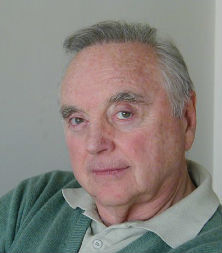
 This guest post is by bestselling author Warren Adler. Adler is an acclaimed novelist of more than 40+ novels, a regular contributor to the Huffington Post and consistently writes about his experience as an independent, self-published eBook author with his own press, Stonehouse Productions. Currently in development for Adler is the Hollywood sequel to The War of the Roses – The War of the Roses: The Children, along with other projects including Capitol Crimes, a television series based on Warren Adler’s Fiona Fitzgerald mystery novels. Learn more about Warren and his new film/TV developments on his website here. American Quartet, book 1 of his Fiona Fitzgerald series is now on Kindle promo for $1.99 through June 24th. Follow him here on Twitter and Facebook.
This guest post is by bestselling author Warren Adler. Adler is an acclaimed novelist of more than 40+ novels, a regular contributor to the Huffington Post and consistently writes about his experience as an independent, self-published eBook author with his own press, Stonehouse Productions. Currently in development for Adler is the Hollywood sequel to The War of the Roses – The War of the Roses: The Children, along with other projects including Capitol Crimes, a television series based on Warren Adler’s Fiona Fitzgerald mystery novels. Learn more about Warren and his new film/TV developments on his website here. American Quartet, book 1 of his Fiona Fitzgerald series is now on Kindle promo for $1.99 through June 24th. Follow him here on Twitter and Facebook.2. You get 100 pages in a novel and suddenly decide you’re tossing it allThis may seem insane but I normally know whether or not I am on to something good only after being 100 pages into a story. I’m willing to bet some of you go much farther.
3. Your friends think you’ve become a recluse because you spend so much time at your writing desk. I’m usually very regimented about my writing schedule and typically wake up at about 5 a.m. and start writing until 10 a.m. There have been times, however, where I’ve spent an entire day in my study working on a novel. Little do these friends know the kind of dynamic journey writers go on in their work.
[Did you know there are 7 reasons writing a novel makes you a badass? Read about them here.]
4. Choosing between creativity and money.We don’t live by money alone. For those who aspire to the high art of literary writing, similarly to painters, composers, musicians, and others who prize, above all, discovering insight into the human condition, we will always put creation over the clink of coinage (or at least find a clever way to bridge the gap).
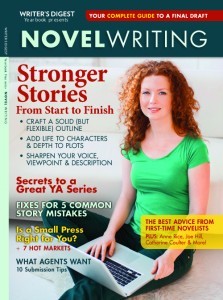 WRITE YOUR NOVEL NOW!Get the complete start-to-finish mega-guide to
WRITE YOUR NOVEL NOW!Get the complete start-to-finish mega-guide to writing your book with Novel Writing, a special
130-page bookazine from Writer’s Digest. Download it now or buy it in print .
5. Sometimes you spend a lot more time researching for your story than you do writing.Actually, this isn’t really a struggle but I’m leaving it in. When I was working on TARGET CHURCHILL, I spent months reading memoirs by Winston Churchill among other historical documents. It was all grist for the novelist’s mill. My research led to new characters and sub-plots. It was all so rich and intriguing that I could have spent a lifetime on the topic.
6. You have a lot of trouble trying to decide how your novel will end.Honestly, if I ever knew the ending of a novel in advance, I wouldn’t write it. The way in which I write is to let my characters come alive in my head and interact with each other, create conflict with each other, and work out their own destinies. I know this sounds out there but writers will know what I’m talking about.
[Understanding Book Contracts: Learn what’s negotiable and what’s not.]
7. There are times when you can’t sleep at night because you’re constantly thinking about what the next page in your story will be.Sound familiar? There’s nothing wrong with a smidgen of insomnia for the sake of your writing. It’s a kind of rites of passage for the dedicated novelist. I am always writing a story in my head, keeping a log of ideas that pop up. I find that the best thing to do is keep a notepad or journal near you so you can jot thoughts down, otherwise you’ll just end up more frustrated that you can’t get it out of your head and onto paper.
8. Editors start changing and omitting parts of your story that you think should be left in.One of the reasons I went independent was because I could not stand editors who took it upon themselves to essentially bulldoze entire sections of my work that I’d spent a lot of painstaking time on. I am always weary of this. I would rather make my own mistakes than have someone else make them for me.
9. You’re CONSTANTLY rewriting!Well, I firmly believe that the key to good writing is rewriting. When I write a novel I go back to it every single day and I try to produce at least 5 pages. I’ll write 5 pages one day then go back the next day, start from the beginning and rewrite. I’ve managed 39+ novels so evidently this isn’t such a bad process.
[How Long Should Novel Chapters Be? Click here to find out.]
10. You know all too well what it’s like to get lost in your characters, in fact, sometimes your characters get out of line and start going off on tangents.If this doesn’t happen to you at some point then something must be wrong. Naturally, I become heavily invested in the characters I create, what they think, how they act, what they wish for, their passions, their emotional lives, their angst, their sexuality, their inner hungers and desires. They find internal expression in my third person style of writing and It becomes necessary to curb my imagination at times. You’re probably wondering what those tangents sound like (that’s for another blog).
Published on July 20, 2015 19:35
Romantic Erotic Ebooks / Books by Neale Sourna from PIE: Perception Is Everything Publishing
PIE: Perception Is Everything -- our hardcore main line[sensuality is R, NC17, X, XXX]medium and hard erotica / sensual romance / romantic eroticaBUY from Catalog Soft Focus
PIE: Perception Is Everything's SoftFocus-- our softcore line
--[sensuality is PG13, Soft R]
soft erotica / sensual romance / romantic erotica and general fictionBUY from CatalogClearFocus
PIE: Perception Is Everything's ClearFocus-- our nonfiction line
BUY from Catalog

 also - Dia's Weekend with Coach (2) [Work in Progress
also - Dia's Weekend with Coach (2) [Work in Progress
Polished Fiction + Author Notes + Original older texts
 Polished Fiction only
Polished Fiction only






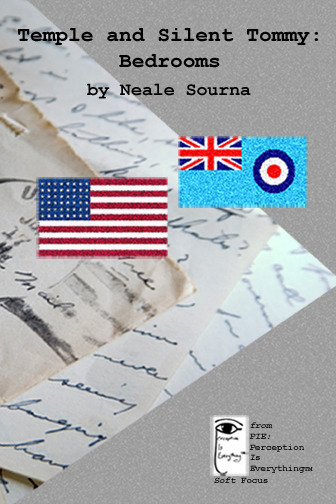
















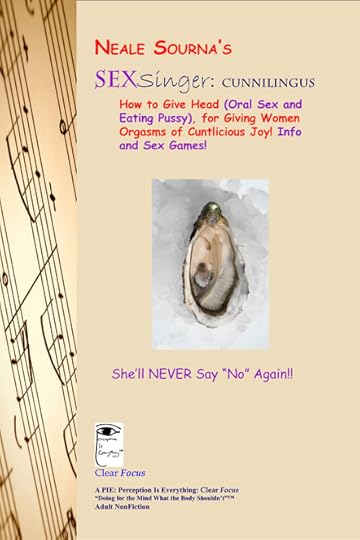

Becca.Neale-Sourna.com
BECCA DuMAURIER
(publishing in 2015), the expanded and extended full novel.
Excerpts (2 chapters:
--- 2/ 2: Becca Escapes to Sea
--- 3/ 3: Becca Gets Her Sea Legs)
and FILM SHORT VIDEO:
Becca Gets Her Sea Legs_SneakPeek_05-08-2014.mov
Becca.Neale-Sourna.com
BUY from Catalog Listing of books, ebooks, short stories, excerpts, novels and more, like games, poems, scripts/screenplays PIE: Perception Is Everything
[image error]
PIE: Percept
[image error]
Soft Focus
[image error]
ClearFocus

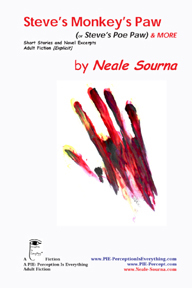
Tango With Me
Poetry

Great fiction stories just posted to two new websites: Samurai (2), Australian outback western mail order bride romance about a shy love (3), "Becca"(a short story novel) with adventure, pirates, a duke and a runaway lady, and more published at: www.romantic4ever.com/romantic-fiction/index.html"Becca" (a short story novel, 6 of the chapters) A swashbuckling pirate story!
_Cornwall, England UK; 1680s"Outback Love" [aka "Mail Order Love"] in three (3) act chapters
_Coober Pedy, South Australia; 1919
"Samurai Days" & "Samurai Nights"
_Kyoto, Japan; 1600s
and five of my wedding night stories are now here: http://www.weddingnight.com/"Frictionless Sheets" Intergalactic Deep Space sometime in the Future"The Veil: 1846" Gretna Green, Scotland"No Touching"USA, Today"Empty Nest Honeymoon" Australia and Pradesh, India"Iraqi Honeymoon" Fallujah, Iraq==================== Short Stories/Romance Stories Short Stories/Romance Stories:
"Laraina"
An Old West Calvary Colonel and a "virginal," corseted, mulatto beauty.
Asian Indian Romance and Sex Short Stories by Neale Sourna
http://indiansex-video.com/indian-sex...
[now offline]
Bound (html) / Bound (pdf), Bound 2 (pdf)(bondage, s/m)
Raj (entire story, html) / Raj, Raj 2, Raj 3(British India romance)
Garba Magic (entire story, html) /
Garba Magic (part 1, pdf),
Garba Magic 2 (pdf), Garba Magic 3 (pdf) (romantic love and dance)
Call Center (html) / Call Center (pdf) (erotic phone sex, anyone?)
Mile High Club (html) / Mile High Club (pdf) (sex on high)
Rini and Kala (html) / Rini and Kala (pdf) (budding lesbian college romance)
Internet Connection (html) / Internet Connection (video sex, anyone?)
No Kisses (html) / No Kisses(love despite kids)
Wedding Hookup (html) / Wedding Hookup (duh)
Cock Wonder (html) / Cock Wonder (pdf) (oh yeah!)
All of the above stories by Neale Sourna at www.Writing-Naked.com/ copyright for these stories in this form by http://indiansex-video.com/[No longer found] MANY MOREBANNED by Amazon and Google but AVAILABLE HERE_NS' North Coast Academies' Diary STORIES...CLICK
FIND MOREHardcore Story Books & Games
...CLICK
FIND MORESoftcore Short Story Books & Games from Neale and PIE
...CLICK
MORE Nonfiction Information
...CLICK
"Remembering Our Parents"
by Stuart Gustafson
from AITE Publishing
Neale Sourna, contributor
Listing of books, ebooks, short stories, excerpts, novels and more, like games, poems, scripts/screenplays (still adding material) by author Neale Sourna Neale Sourna at Google Books [image error] Entire website or content Copyright 1988-2015 Neale Sourna
Trademarks belong to their respective owners. All rights reserved.
PIE: Perception Is Everything(TM)
 "Doing for the mind, what the body shouldn't."--NS
"Doing for the mind, what the body shouldn't."--NS
Email us at Contact Us
Published on July 20, 2015 19:28
June 16, 2015
7 Tips For Writing About Trauma By: Guest Column | June 16, 2015 / Writers Digest
http://www.writersdigest.com/online-editor/7-tips-for-writing-about-trauma?et_mid=760088&rid=239601190
I was 24 years old when my brother, my only sibling, died by suicide. Fresh out of a graduate program in literature, words were the way I made sense of my life. I decided that they were the only way I’d be able to make sense of my brother’s death.
Research has proven that writing about traumatic events, if done properly, can be beneficial. I spent nearly a decade working on a memoir about my brother’s suicide, our lives, and my grief. Here’s what I learned along the way:
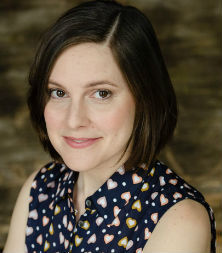
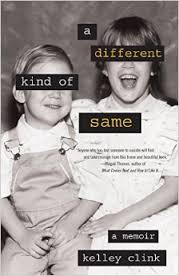 This guest post is by Kelley Clink. Clink is the author of A Different Kind of Same (She Writes Press, June 9, 2015) and is a full-time writer with degrees in literature from the University of Alabama and DePaul University. She is the winner of the 2014 Beacon Street Prize in Nonfiction and has been nominated for the Pushcart Prize. She currently lives in Chicago with her husband. Connect with her at KelleyClink.com, at Facebook.com/kelleyclinkauthor or on Twitter @kelley_clink.
This guest post is by Kelley Clink. Clink is the author of A Different Kind of Same (She Writes Press, June 9, 2015) and is a full-time writer with degrees in literature from the University of Alabama and DePaul University. She is the winner of the 2014 Beacon Street Prize in Nonfiction and has been nominated for the Pushcart Prize. She currently lives in Chicago with her husband. Connect with her at KelleyClink.com, at Facebook.com/kelleyclinkauthor or on Twitter @kelley_clink.
1. Give Yourself TimeFor the first two years after my brother’s death, all I could do was focus on daily life. Any time I tried to write about my brother, I felt worse. According to Harvard Health Publications, this is common. Dr. James W. Pennebaker, a researcher on the health benefits of writing about trauma, recommends people wait at least one or two months after a traumatic event occurs before writing about it.
2. Reach Out to Your Support NetworkWhen I began writing about my brother, it felt like I was grieving all over again. I hadn’t told anyone what I was doing, so my husband, parents, and close friends didn’t know why I was suddenly more sensitive. After telling my loved ones about my project, I received the space and support I needed to deal with the difficult emotions that came up during the writing process.
[Want to land an agent? Here are 4 things to consider when researching literary agents.]
3. Write to Heal, Then Write to PublishI knew from the beginning that I wanted to write a book, and that I wanted to share that book with the public. But the first and second drafts of my manuscript were just for me. If I’d written them with an audience in mind, I might have held back. I might have shut down. I definitely wouldn’t have been able to work through my grief. The first time you tell the story, tell it for you. Don’t show it to anyone, if you don’t want to. If your intent is to share the work with others, you can make edits with an audience in mind later.
4. Start SlowlyI began writing about my brother in short journal entries, just fifteen minutes a day. Small goals made the project feel more manageable. [Like this quote? Click here to Tweet and share it!]
5. Walk Away When You Need ToThere were times during the writing of my memoir when my emotions became overwhelming. When that happened, I took a break—either by working on another part of the book or taking a few days off from writing completely.
[Memoir or Novel? 8 Issues to Think About Before Writing Your Own Story]
6. Be Patient and Gentle With YourselfThe work you are doing is hard. It’s not always going to feel good. It may take you a long time to complete. Be kind to yourself along the way. Treat yourself to long walks, naps, warm baths, strong cups of good coffee, or an extra chocolate chip cookie.
7. Work With a Mental Health ProfessionalIf you don’t already have a therapist, get one. Writing about a traumatic event, even one that happened decades ago, is bound to trigger some complicated emotions. Some research suggests that writing about trauma is most beneficial when it focuses on meaning and understanding, rather than simply reliving the detail of the event. A mental health professional should be able to help you frame your experience in a way that encourages healing.
======
If writing for your characters without the full experience she speaks of, find a loss, death, whatever trauma--your team lost and you REALLY WANTED THEM TO TRIUMPH.
Pain is pain. Work with it, just change what it is in the story. Or not.
Perhaps, someone is over the top sad or angry about that team loss--Cavs fan. But, it's still a real pain. And yet, maybe, your character is ALSO using it to hide a greater pain, a more fantastic, personal lost.
See? Work at it slowly and layer the feelings in and distill it until it's right.
_NS
I was 24 years old when my brother, my only sibling, died by suicide. Fresh out of a graduate program in literature, words were the way I made sense of my life. I decided that they were the only way I’d be able to make sense of my brother’s death.
Research has proven that writing about traumatic events, if done properly, can be beneficial. I spent nearly a decade working on a memoir about my brother’s suicide, our lives, and my grief. Here’s what I learned along the way:

 This guest post is by Kelley Clink. Clink is the author of A Different Kind of Same (She Writes Press, June 9, 2015) and is a full-time writer with degrees in literature from the University of Alabama and DePaul University. She is the winner of the 2014 Beacon Street Prize in Nonfiction and has been nominated for the Pushcart Prize. She currently lives in Chicago with her husband. Connect with her at KelleyClink.com, at Facebook.com/kelleyclinkauthor or on Twitter @kelley_clink.
This guest post is by Kelley Clink. Clink is the author of A Different Kind of Same (She Writes Press, June 9, 2015) and is a full-time writer with degrees in literature from the University of Alabama and DePaul University. She is the winner of the 2014 Beacon Street Prize in Nonfiction and has been nominated for the Pushcart Prize. She currently lives in Chicago with her husband. Connect with her at KelleyClink.com, at Facebook.com/kelleyclinkauthor or on Twitter @kelley_clink.1. Give Yourself TimeFor the first two years after my brother’s death, all I could do was focus on daily life. Any time I tried to write about my brother, I felt worse. According to Harvard Health Publications, this is common. Dr. James W. Pennebaker, a researcher on the health benefits of writing about trauma, recommends people wait at least one or two months after a traumatic event occurs before writing about it.
2. Reach Out to Your Support NetworkWhen I began writing about my brother, it felt like I was grieving all over again. I hadn’t told anyone what I was doing, so my husband, parents, and close friends didn’t know why I was suddenly more sensitive. After telling my loved ones about my project, I received the space and support I needed to deal with the difficult emotions that came up during the writing process.
[Want to land an agent? Here are 4 things to consider when researching literary agents.]
3. Write to Heal, Then Write to PublishI knew from the beginning that I wanted to write a book, and that I wanted to share that book with the public. But the first and second drafts of my manuscript were just for me. If I’d written them with an audience in mind, I might have held back. I might have shut down. I definitely wouldn’t have been able to work through my grief. The first time you tell the story, tell it for you. Don’t show it to anyone, if you don’t want to. If your intent is to share the work with others, you can make edits with an audience in mind later.
4. Start SlowlyI began writing about my brother in short journal entries, just fifteen minutes a day. Small goals made the project feel more manageable. [Like this quote? Click here to Tweet and share it!]
5. Walk Away When You Need ToThere were times during the writing of my memoir when my emotions became overwhelming. When that happened, I took a break—either by working on another part of the book or taking a few days off from writing completely.
[Memoir or Novel? 8 Issues to Think About Before Writing Your Own Story]
6. Be Patient and Gentle With YourselfThe work you are doing is hard. It’s not always going to feel good. It may take you a long time to complete. Be kind to yourself along the way. Treat yourself to long walks, naps, warm baths, strong cups of good coffee, or an extra chocolate chip cookie.
7. Work With a Mental Health ProfessionalIf you don’t already have a therapist, get one. Writing about a traumatic event, even one that happened decades ago, is bound to trigger some complicated emotions. Some research suggests that writing about trauma is most beneficial when it focuses on meaning and understanding, rather than simply reliving the detail of the event. A mental health professional should be able to help you frame your experience in a way that encourages healing.
======
If writing for your characters without the full experience she speaks of, find a loss, death, whatever trauma--your team lost and you REALLY WANTED THEM TO TRIUMPH.
Pain is pain. Work with it, just change what it is in the story. Or not.
Perhaps, someone is over the top sad or angry about that team loss--Cavs fan. But, it's still a real pain. And yet, maybe, your character is ALSO using it to hide a greater pain, a more fantastic, personal lost.
See? Work at it slowly and layer the feelings in and distill it until it's right.
_NS
Published on June 16, 2015 22:33
June 14, 2015
SPOILERS: "Important" Rapes in OUTLANDER versus GAME OF THRONES series
SPOILERS: The psychopath male on hero male OUTLANDER is integral to the book and film characters of Jamie, Claire, and Black Jack and the further interactions between all three, between wife and husband, and to Jamie and future close male gay friends.
GAME OF THRONES was a total surprise because it's not in the books but a "Sansa replacement" Jeyne Poole was raped by their psychopath, but in the film series it's been since Season one when she was seen, 4 years absence doesn't make you FEEL for Jeyne like you would the real Sansa, whom you've seen yearly since the pilot episode.
Shock people. Tons of women have been raped and murdered and children too on GOT, and now you finally notice that it's not background NOISE, it's pain, with reverberations.
Ask Jamie, Claire, and Brianna.
http://www.inquisitr.com/2149308/outlander-boss-ron-moore-talks-surprising-reaction-to-sam-heughans-brutal-rape-scene-in-season-one-finale/
!['Outlander' Boss Ron Moore Talks Surprising Reaction To Sam Heughan's Brutal Rape Scene In Season One Finale [Image Courtesy: Starz]](https://i.gr-assets.com/images/S/compressed.photo.goodreads.com/hostedimages/1434415481i/15218423._SX540_.jpg)
GAME OF THRONES was a total surprise because it's not in the books but a "Sansa replacement" Jeyne Poole was raped by their psychopath, but in the film series it's been since Season one when she was seen, 4 years absence doesn't make you FEEL for Jeyne like you would the real Sansa, whom you've seen yearly since the pilot episode.
Shock people. Tons of women have been raped and murdered and children too on GOT, and now you finally notice that it's not background NOISE, it's pain, with reverberations.
Ask Jamie, Claire, and Brianna.
http://www.inquisitr.com/2149308/outlander-boss-ron-moore-talks-surprising-reaction-to-sam-heughans-brutal-rape-scene-in-season-one-finale/
!['Outlander' Boss Ron Moore Talks Surprising Reaction To Sam Heughan's Brutal Rape Scene In Season One Finale [Image Courtesy: Starz]](https://i.gr-assets.com/images/S/compressed.photo.goodreads.com/hostedimages/1434415481i/15218423._SX540_.jpg)
Published on June 14, 2015 19:05
May 30, 2015
The Daily Beast: TV Characters That Vanished: ‘Mad Men’s’ Sal and Others with Loose Ends
http://www.thedailybeast.com/articles/2015/05/30/tv-characters-that-vanished-mad-men-s-sal-and-other-television-characters-with-loose-ends.html
It’s been revealed that one of Mad Men creator Matthew Weiner’s wishes was to wrap up Sal’s storyline. Here are other memorable TV characters that disappeared without a trace.
As good as the Mad Men season finale was, it couldn’t possibly wrap up every storyline.
This week, Entertainment Weekly’s Anthony Breznican tweeted out a photo of one of Matthew Weiner’s production notes for Mad Men titled “Wish List: Things We Want to Deal With Before the Series Ends.” The list includes the question, “Sal – what happened to him?”—referring, of course, to Salvatore Romano, the closeted gay Art Director at Sterling Cooper who was fired in season three when he rejected the advances of Lucky Strike’s Lee Garner Jr.
Plenty of fans wondered the same thing as Weiner about Sal’s ending, and even bombarded AMC with letters calling for his return. Sal was popular not only because he gave us a peek into the way homosexuality was viewed in the 1960s (and he did it in a way that, in classic Mad Men style, wasn’t didactic or preachy), but also because he was a damn fun character to watch. Who could forget that Bye Bye Birdie dance?
His lack of a resolution was even more noticeable because a lot of people binge-watched Mad Men. While writers on shows in the past could make characters disappear season-to-season, relying on audiences forgetting minor characters over the summer months—when a whopping 62.3 million people worldwide subscribe to Netflix—means audiences have no problem remembering their favorite characters and holding writers to task for getting rid of them.
In honor of Sal, here are some other characters that vanished forever off of shows without any satisfying resolution. Writers thought we wouldn’t notice? They didn’t anticipate Netflix and the nitpicky/obsessive zeal of rabid fans who won’t—ever—let it go.
1. Mandy Hampton on The West Wing (Moira Kelly)
 Based on the real-life political advisor Mandy Grunwald, this loud-mouthed broad fearlessly talked back to everyone (except POTUS) in Season 1, and was supposed to serve as Josh’s love interest. Mandy got into some hot water after a memo leaked that she had written criticizing the Bartlet administration (before she started working for them), and after that her character began to fade away. She appeared in fewer and fewer episodes as Season 1 went on, and was completely written out of season 2 with no explanation.
Based on the real-life political advisor Mandy Grunwald, this loud-mouthed broad fearlessly talked back to everyone (except POTUS) in Season 1, and was supposed to serve as Josh’s love interest. Mandy got into some hot water after a memo leaked that she had written criticizing the Bartlet administration (before she started working for them), and after that her character began to fade away. She appeared in fewer and fewer episodes as Season 1 went on, and was completely written out of season 2 with no explanation.
2. Valery on The Sopranos (Vitali Baganov)
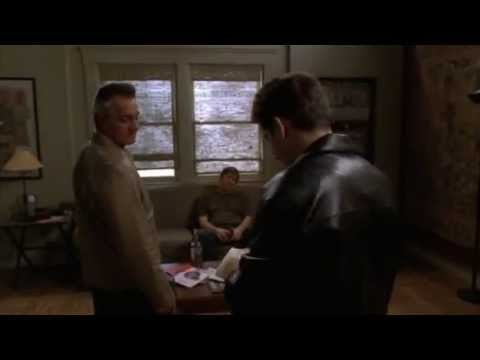 Probably the most famous unresolved character in television history, the Russian gangster Valery in season three’s “Pine Barrens” managed to flee from Christopher and Paulie after they shot him in the head. While creator David Chase could not understand why anyone gave “a shit about this Russian,” he did admit after a lot of prodding that the fate he envisioned for him was that he passed out, was discovered by some Boy Scouts, and eventually shipped back to Russia with massive head trauma. Chase’s explanation doesn’t really clear up how Valery managed to escape without a trace (or who stole Paulie’s car), but it’s better than nothing.
Probably the most famous unresolved character in television history, the Russian gangster Valery in season three’s “Pine Barrens” managed to flee from Christopher and Paulie after they shot him in the head. While creator David Chase could not understand why anyone gave “a shit about this Russian,” he did admit after a lot of prodding that the fate he envisioned for him was that he passed out, was discovered by some Boy Scouts, and eventually shipped back to Russia with massive head trauma. Chase’s explanation doesn’t really clear up how Valery managed to escape without a trace (or who stole Paulie’s car), but it’s better than nothing.
3. Dr. Erica Hahn on Grey’s Anatomy (Brooke Smith)
 Dr. Hahn and Dr. Callie’s lesbian relationship was praised for its realism and emotional honesty, but that wasn’t enough to save Dr. Hahn’s character from extinction. Though she was a major presence on the show, she never received any ending at all. She simply heads to her car in an episode of Season 5 and is never seen again. Creator Shonda Rhimes, responding to the confusion and anger audiences felt about this casting change, stated that Smith was “obviously not fired for playing a lesbian.”
Dr. Hahn and Dr. Callie’s lesbian relationship was praised for its realism and emotional honesty, but that wasn’t enough to save Dr. Hahn’s character from extinction. Though she was a major presence on the show, she never received any ending at all. She simply heads to her car in an episode of Season 5 and is never seen again. Creator Shonda Rhimes, responding to the confusion and anger audiences felt about this casting change, stated that Smith was “obviously not fired for playing a lesbian.”
4. Betsy Putch on The Mindy Project (Zoe Jarman)
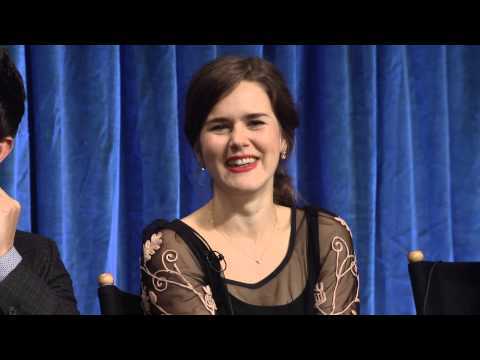 Kaling’s recently canceled show endured a lot of casting bloodshed during its three-season tenure, and there were plenty of characters who came and went without any clear cause, but Betsy’s was perhaps the hardest to take. She was naïve, sure, but she added a nice flavor of sweetness to this otherwise quasi-cynical show.
Kaling’s recently canceled show endured a lot of casting bloodshed during its three-season tenure, and there were plenty of characters who came and went without any clear cause, but Betsy’s was perhaps the hardest to take. She was naïve, sure, but she added a nice flavor of sweetness to this otherwise quasi-cynical show.
5. Stuart Minkus on Boy Meets World (Lee Norris)
 The annoying nerd literally vanished into thin air in the episode “I Dream of Feeny,” when Cory and Shawn wished him away. He was never heard from again until the last episode of the series when, in a kind of a wink to the audience, he returns and tells Cory he was just in a different part of the school this whole time. His character now appears on the Disney channel spinoff series Girl Meets World as the father of one of the schoolmates and the CEO of the corporation Minkus International.
The annoying nerd literally vanished into thin air in the episode “I Dream of Feeny,” when Cory and Shawn wished him away. He was never heard from again until the last episode of the series when, in a kind of a wink to the audience, he returns and tells Cory he was just in a different part of the school this whole time. His character now appears on the Disney channel spinoff series Girl Meets World as the father of one of the schoolmates and the CEO of the corporation Minkus International.
6. Cousin Oliver on The Brady Bunch (Robbie Rist)
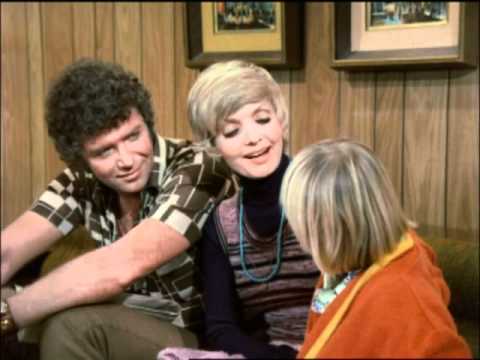 Unlike other characters on this list, Cousin Oliver was liked by almost no one. He was weird, not funny, and committed the worst kinds of sins you could on The Brady Bunch, like ruining Marsha’s painting and unweaving Carol’s afghan. His most significant contribution to the television arena was becoming the namesake to the tendency TV writers have for introducing child characters late into the series of a show in a desperate attempt to save it from cancelation.
Unlike other characters on this list, Cousin Oliver was liked by almost no one. He was weird, not funny, and committed the worst kinds of sins you could on The Brady Bunch, like ruining Marsha’s painting and unweaving Carol’s afghan. His most significant contribution to the television arena was becoming the namesake to the tendency TV writers have for introducing child characters late into the series of a show in a desperate attempt to save it from cancelation.
7. Charlie on Girls (Christopher Abbott)
 While we (kind of) were told what happened to Charlie—he and Marnie bought ingredients to buy grilled pizzas, came back to the apartment, and he told Marnie that he never loved her—his ending was far from rewarding. And this was not entirely the writers’ fault. Christopher Abbott, the actor who played him, decided that he no longer wanted to be part of the show. But his leaving forced the writers to dredge up the depressed-Marnie storyline for yet another season.
share
tweet
post
email
While we (kind of) were told what happened to Charlie—he and Marnie bought ingredients to buy grilled pizzas, came back to the apartment, and he told Marnie that he never loved her—his ending was far from rewarding. And this was not entirely the writers’ fault. Christopher Abbott, the actor who played him, decided that he no longer wanted to be part of the show. But his leaving forced the writers to dredge up the depressed-Marnie storyline for yet another season.
share
tweet
post
email
It’s been revealed that one of Mad Men creator Matthew Weiner’s wishes was to wrap up Sal’s storyline. Here are other memorable TV characters that disappeared without a trace.
As good as the Mad Men season finale was, it couldn’t possibly wrap up every storyline.
This week, Entertainment Weekly’s Anthony Breznican tweeted out a photo of one of Matthew Weiner’s production notes for Mad Men titled “Wish List: Things We Want to Deal With Before the Series Ends.” The list includes the question, “Sal – what happened to him?”—referring, of course, to Salvatore Romano, the closeted gay Art Director at Sterling Cooper who was fired in season three when he rejected the advances of Lucky Strike’s Lee Garner Jr.
Plenty of fans wondered the same thing as Weiner about Sal’s ending, and even bombarded AMC with letters calling for his return. Sal was popular not only because he gave us a peek into the way homosexuality was viewed in the 1960s (and he did it in a way that, in classic Mad Men style, wasn’t didactic or preachy), but also because he was a damn fun character to watch. Who could forget that Bye Bye Birdie dance?
His lack of a resolution was even more noticeable because a lot of people binge-watched Mad Men. While writers on shows in the past could make characters disappear season-to-season, relying on audiences forgetting minor characters over the summer months—when a whopping 62.3 million people worldwide subscribe to Netflix—means audiences have no problem remembering their favorite characters and holding writers to task for getting rid of them.
In honor of Sal, here are some other characters that vanished forever off of shows without any satisfying resolution. Writers thought we wouldn’t notice? They didn’t anticipate Netflix and the nitpicky/obsessive zeal of rabid fans who won’t—ever—let it go.
1. Mandy Hampton on The West Wing (Moira Kelly)
 Based on the real-life political advisor Mandy Grunwald, this loud-mouthed broad fearlessly talked back to everyone (except POTUS) in Season 1, and was supposed to serve as Josh’s love interest. Mandy got into some hot water after a memo leaked that she had written criticizing the Bartlet administration (before she started working for them), and after that her character began to fade away. She appeared in fewer and fewer episodes as Season 1 went on, and was completely written out of season 2 with no explanation.
Based on the real-life political advisor Mandy Grunwald, this loud-mouthed broad fearlessly talked back to everyone (except POTUS) in Season 1, and was supposed to serve as Josh’s love interest. Mandy got into some hot water after a memo leaked that she had written criticizing the Bartlet administration (before she started working for them), and after that her character began to fade away. She appeared in fewer and fewer episodes as Season 1 went on, and was completely written out of season 2 with no explanation.2. Valery on The Sopranos (Vitali Baganov)
 Probably the most famous unresolved character in television history, the Russian gangster Valery in season three’s “Pine Barrens” managed to flee from Christopher and Paulie after they shot him in the head. While creator David Chase could not understand why anyone gave “a shit about this Russian,” he did admit after a lot of prodding that the fate he envisioned for him was that he passed out, was discovered by some Boy Scouts, and eventually shipped back to Russia with massive head trauma. Chase’s explanation doesn’t really clear up how Valery managed to escape without a trace (or who stole Paulie’s car), but it’s better than nothing.
Probably the most famous unresolved character in television history, the Russian gangster Valery in season three’s “Pine Barrens” managed to flee from Christopher and Paulie after they shot him in the head. While creator David Chase could not understand why anyone gave “a shit about this Russian,” he did admit after a lot of prodding that the fate he envisioned for him was that he passed out, was discovered by some Boy Scouts, and eventually shipped back to Russia with massive head trauma. Chase’s explanation doesn’t really clear up how Valery managed to escape without a trace (or who stole Paulie’s car), but it’s better than nothing.3. Dr. Erica Hahn on Grey’s Anatomy (Brooke Smith)
 Dr. Hahn and Dr. Callie’s lesbian relationship was praised for its realism and emotional honesty, but that wasn’t enough to save Dr. Hahn’s character from extinction. Though she was a major presence on the show, she never received any ending at all. She simply heads to her car in an episode of Season 5 and is never seen again. Creator Shonda Rhimes, responding to the confusion and anger audiences felt about this casting change, stated that Smith was “obviously not fired for playing a lesbian.”
Dr. Hahn and Dr. Callie’s lesbian relationship was praised for its realism and emotional honesty, but that wasn’t enough to save Dr. Hahn’s character from extinction. Though she was a major presence on the show, she never received any ending at all. She simply heads to her car in an episode of Season 5 and is never seen again. Creator Shonda Rhimes, responding to the confusion and anger audiences felt about this casting change, stated that Smith was “obviously not fired for playing a lesbian.”4. Betsy Putch on The Mindy Project (Zoe Jarman)
 Kaling’s recently canceled show endured a lot of casting bloodshed during its three-season tenure, and there were plenty of characters who came and went without any clear cause, but Betsy’s was perhaps the hardest to take. She was naïve, sure, but she added a nice flavor of sweetness to this otherwise quasi-cynical show.
Kaling’s recently canceled show endured a lot of casting bloodshed during its three-season tenure, and there were plenty of characters who came and went without any clear cause, but Betsy’s was perhaps the hardest to take. She was naïve, sure, but she added a nice flavor of sweetness to this otherwise quasi-cynical show.5. Stuart Minkus on Boy Meets World (Lee Norris)
 The annoying nerd literally vanished into thin air in the episode “I Dream of Feeny,” when Cory and Shawn wished him away. He was never heard from again until the last episode of the series when, in a kind of a wink to the audience, he returns and tells Cory he was just in a different part of the school this whole time. His character now appears on the Disney channel spinoff series Girl Meets World as the father of one of the schoolmates and the CEO of the corporation Minkus International.
The annoying nerd literally vanished into thin air in the episode “I Dream of Feeny,” when Cory and Shawn wished him away. He was never heard from again until the last episode of the series when, in a kind of a wink to the audience, he returns and tells Cory he was just in a different part of the school this whole time. His character now appears on the Disney channel spinoff series Girl Meets World as the father of one of the schoolmates and the CEO of the corporation Minkus International. 6. Cousin Oliver on The Brady Bunch (Robbie Rist)
 Unlike other characters on this list, Cousin Oliver was liked by almost no one. He was weird, not funny, and committed the worst kinds of sins you could on The Brady Bunch, like ruining Marsha’s painting and unweaving Carol’s afghan. His most significant contribution to the television arena was becoming the namesake to the tendency TV writers have for introducing child characters late into the series of a show in a desperate attempt to save it from cancelation.
Unlike other characters on this list, Cousin Oliver was liked by almost no one. He was weird, not funny, and committed the worst kinds of sins you could on The Brady Bunch, like ruining Marsha’s painting and unweaving Carol’s afghan. His most significant contribution to the television arena was becoming the namesake to the tendency TV writers have for introducing child characters late into the series of a show in a desperate attempt to save it from cancelation.7. Charlie on Girls (Christopher Abbott)
 While we (kind of) were told what happened to Charlie—he and Marnie bought ingredients to buy grilled pizzas, came back to the apartment, and he told Marnie that he never loved her—his ending was far from rewarding. And this was not entirely the writers’ fault. Christopher Abbott, the actor who played him, decided that he no longer wanted to be part of the show. But his leaving forced the writers to dredge up the depressed-Marnie storyline for yet another season.
share
tweet
post
email
While we (kind of) were told what happened to Charlie—he and Marnie bought ingredients to buy grilled pizzas, came back to the apartment, and he told Marnie that he never loved her—his ending was far from rewarding. And this was not entirely the writers’ fault. Christopher Abbott, the actor who played him, decided that he no longer wanted to be part of the show. But his leaving forced the writers to dredge up the depressed-Marnie storyline for yet another season.
share
tweet
post
email
Published on May 30, 2015 20:58
May 29, 2015
NEW EBOOKS/BOOKS from AUTHOR Neale Sourna and PIE: Perception Is Everything
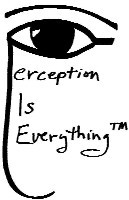
PIE: Perception Is Everything -- our hardcore main line[sensuality is R, NC17, X, XXX]medium and hard erotica / sensual romance / romantic eroticaBUY from Catalog
 Soft
Focus
Soft
Focus
PIE: Perception Is Everything's SoftFocus-- our softcore line --[sensuality is PG13, Soft R] soft erotica / sensual romance / romantic erotica and general fictionBUY from Catalog
 ClearFocus
ClearFocusPIE: Perception Is Everything's ClearFocus -- our nonfiction line[PG13, R, NC17, X, XXX]nonfictionBUY from Catalog
Listing of books, ebooks, short stories, excerpts, novels and more, like games, poems, scripts/screenplays (always adding NEW material, come back OFTEN)

 also - Dia's Weekend with Coach (2) [Work in Progress
also - Dia's Weekend with Coach (2) [Work in Progress 
Polished Fiction + Author Notes + Original older texts
 Polished Fiction only
Polished Fiction only 

























Becca.Neale-Sourna.com
BECCA DuMAURIER
(publishing in 2015), the expanded and extended full novel.
Excerpts (2 chapters:
--- 2/ 2: Becca Escapes to Sea
--- 3/ 3: Becca Gets Her Sea Legs)
and FILM SHORT VIDEO:
Becca Gets Her Sea Legs_SneakPeek_05-08-2014.mov
Becca.Neale-Sourna.com
BUY from Catalog Listing of books, ebooks, short stories, excerpts, novels and more, like games, poems, scripts/screenplays PIE: Perception Is Everything

PIE: Percept

Soft Focus

ClearFocus


Tango With Me
Poetry

Great fiction stories just posted to two new websites: Samurai (2), Australian outback western mail order bride romance about a shy love (3), "Becca"(a short story novel) with adventure, pirates, a duke and a runaway lady, and more published at:
www.romantic4ever.com/romantic-fiction/index.html
"Becca" (a short story novel, 6 of the chapters) A swashbuckling pirate story!
_Cornwall, England UK; 1680s"Outback Love" [aka "Mail Order Love"] in three (3) act chapters
_Coober Pedy, South Australia; 1919
"Samurai Days" & "Samurai Nights"
_Kyoto, Japan; 1600s
and five of my wedding night stories are now here:
http://www.weddingnight.com/
"Frictionless Sheets" Intergalactic Deep Space sometime in the Future
"The Veil: 1846" Gretna Green, Scotland
"No Touching"USA, Today
"Empty Nest Honeymoon" Australia and Pradesh, India
"Iraqi Honeymoon" Fallujah, Iraq
====================
Short Stories/Romance Stories Short Stories/Romance Stories:
"Laraina" An Old West Calvary Colonel and a "virginal," corseted, mulatto beauty.
Asian Indian Romance and Sex Short Stories by Neale Sourna http://indiansex-video.com/indian-sex...
[now offline]
Bound (html) / Bound (pdf), Bound 2 (pdf)(bondage, s/m)
Raj (entire story, html) / Raj, Raj 2, Raj 3(British India romance)
Garba Magic (entire story, html) /
Garba Magic (part 1, pdf),
Garba Magic 2 (pdf), Garba Magic 3 (pdf) (romantic love and dance)
Call Center (html) / Call Center (pdf) (erotic phone sex, anyone?)
Mile High Club (html) / Mile High Club (pdf) (sex on high)
Rini and Kala (html) / Rini and Kala (pdf) (budding lesbian college romance)
Internet Connection (html) / Internet Connection (video sex, anyone?)
No Kisses (html) / No Kisses(love despite kids)
Wedding Hookup (html) / Wedding Hookup (duh)
Cock Wonder (html) / Cock Wonder (pdf) (oh yeah!)
All of the above stories by Neale Sourna at www.Writing-Naked.com/ copyright for these stories in this form by http://indiansex-video.com/[No longer found] MANY MOREBANNED by Amazon and Google but AVAILABLE HERE_NS' North Coast Academies' Diary STORIES...CLICK
FIND MOREHardcore Story Books & Games
...CLICK
FIND MORESoftcore Short Story Books & Games from Neale and PIE
...CLICK
MORE Nonfiction Information
...CLICK
"Remembering Our Parents"
by Stuart Gustafson
from AITE Publishing
Neale Sourna, contributor
Published on May 29, 2015 17:29
May 26, 2015
Maurice Williams & the Zodiacs - Stay
THE ORIGINAL by the man who wrote and sung it. Inspired by a date with a 10pm curfew. He was fifteen, recorded 7 years later. The shortest top hit in US ever. 1 minute 50 seconds. Sweet and to the point and 8 million copies later by all the collective covers.
Published on May 26, 2015 08:05
May 19, 2015
Laurell K Hamilton: Author answers on character writing. Dead Ice: Rafael
http://www.laurellkhamilton.org/2015/05/dead-ice-rafael/
Third in the series leading up to Dead Ice, I almost made it Anita, but in the end I decided we’d go with Rafael, the Rat King.

Raphael, drawn by Bret Booth
Question: When are we going to see Rafael on stage more in the books?
Answer: June 9, 2015 in Dead Ice!
Secrets to Share: Once I decided to have wererats in the first Anita Blake novel, Guilty Pleasures, Rafael just sort of appeared on paper. I don’t remember making notes, or trying to create him. He just walked on stage. He was handsome, Hispanic, a great leader doing his best under difficult circumstances to protect his people.
Question: When are we going to learn more about how Rafael runs the wererats?
Answer: See above, in Dead Ice.
Secrets to Share: Rafael told me how he was running his group. I had to work at figuring out how various other shapeshifter groups were organized, but not the wererats. Rafael was even a good leader in my subconscious. The only thing that I had to “invent” was the crown-shaped brand on his arm as the mark of kingship. That I worked at, but for the rest he’s always been very easy to write.
Question: Are Rafael and Anita a thing/an item?
Answer: If you mean have they had sex together, then yes.
Secrets to Share: No one ever asks if Anita is dating Rafael, they don’t ask if they’re lovers, because that can just imply sex and you all saw them have sex on stage, so that’s a given. But lover can also imply a more emotional involvement, and I don’t think we’re expecting that between them.
So, what are Anita and Rafael to each other? Both have risked their safety, even their lives, to help each other.
They are allies, and have become friends. He is honored and powerful food for Anita’s arduer. In Dead Ice we learn more details than ever before about how they work that.
Sneak Peek from Dead Ice:
His mouth was buried tight against Rafael, his throat working convulsively as he swallowed. I had a moment to think he was drinking blood from the wound, because that was what it meant when I saw Jean-Claude or Asher swallow like that.
Third in the series leading up to Dead Ice, I almost made it Anita, but in the end I decided we’d go with Rafael, the Rat King.

Raphael, drawn by Bret Booth
Question: When are we going to see Rafael on stage more in the books?
Answer: June 9, 2015 in Dead Ice!
Secrets to Share: Once I decided to have wererats in the first Anita Blake novel, Guilty Pleasures, Rafael just sort of appeared on paper. I don’t remember making notes, or trying to create him. He just walked on stage. He was handsome, Hispanic, a great leader doing his best under difficult circumstances to protect his people.
Question: When are we going to learn more about how Rafael runs the wererats?
Answer: See above, in Dead Ice.
Secrets to Share: Rafael told me how he was running his group. I had to work at figuring out how various other shapeshifter groups were organized, but not the wererats. Rafael was even a good leader in my subconscious. The only thing that I had to “invent” was the crown-shaped brand on his arm as the mark of kingship. That I worked at, but for the rest he’s always been very easy to write.
Question: Are Rafael and Anita a thing/an item?
Answer: If you mean have they had sex together, then yes.
Secrets to Share: No one ever asks if Anita is dating Rafael, they don’t ask if they’re lovers, because that can just imply sex and you all saw them have sex on stage, so that’s a given. But lover can also imply a more emotional involvement, and I don’t think we’re expecting that between them.
So, what are Anita and Rafael to each other? Both have risked their safety, even their lives, to help each other.
They are allies, and have become friends. He is honored and powerful food for Anita’s arduer. In Dead Ice we learn more details than ever before about how they work that.
Sneak Peek from Dead Ice:
His mouth was buried tight against Rafael, his throat working convulsively as he swallowed. I had a moment to think he was drinking blood from the wound, because that was what it meant when I saw Jean-Claude or Asher swallow like that.
Published on May 19, 2015 17:54
Laurell K Hamilton: Author answers on character writing. Dead Ice: Richard
http://www.laurellkhamilton.org/2015/05/dead-ice-richard/
Here’s the second in the blog series leading up to the June 9, 2015 release of Dead Ice. Since we started with Jean-Claude, it had to be Richard next.
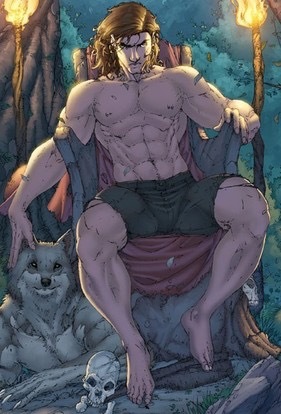
Richard by Brett Booth
Question: Is the character of Richard Zeeman based on your ex-husband?
Answer: No.
Secrets to Share: This was a rumor that I never saw coming, because it was just so not reality. My ex-husband’s sister thought it was the funniest thing ever that people thought her big brother was the basis for Richard. I think that Richard’s skin tone might be the same as my ex, but there the resemblance ends. Personality wise, Richard is actually closer to me when I was just out of college with my BS in Biology.
But he, like all my characters that truly come to life on the page, has grown and changed in ways I never saw coming and certainly didn’t plan. He’s become his own man, for better or worse.
Question: Are Richard and Anita ever going to marry?
Answer: Highly doubtful, I’d just say no, but I’ve been wrong so much about my own character’s personal lives that I’m hedging my bet.
Secrets to Share: In fact, I think one of the reasons Anita and Richard didn’t end up together was that I created him to be the perfect husband for her, or thought I did. The more I tried to push the two of them together, the more they fought it, but my original plan was for them to marry and live happily ever after. So much for me being the omnipotent Deity of my fictional universe. When Richard was created I could never have dreamed where Anita’s life would go, or my own for that matter.
Fiction doesn’t mirror fact, but we’ve both done our own version of going from the conservative “good girl” to the much happier people we are today. As for you small, but vocal minority that are still urging me to kill off Jean-Claude and Micah, so that Anita can ride off into the sunset with Richard – no. Not only no, but absolutely, positively, not happening. Move on, nothing to see here.
Question: Will Richard ever find another person to be his one and only love?
Answer: I don’t know for certain, he’s surprised me too much over the years for me to say yes, or no.
Secrets to Share: I hope he does, and I have a few potential women in mind, for him it will have to a woman if it’s a new character. I think if any man could float his boat enough to have a full-fledged relationship with them then Jean-Claude would be that man. Richard is having a bondage and submission relationship with Asher but no sex. It meets a lot of bondage needs for both of them, but I don’t think either of them would want to actually date each other.
What works great in the dungeon doesn’t always work outside of it.
I still have hopes that Richard, Jean-Claude, and Anita might be a fully functioning menage a trois, but I think too much has happened for it to be what it might once have been, more’s the pity. I keep hoping that special female werewolf will come along for him but he keeps wanting to date women that have no preternatural ties which doesn’t really work for the Ulfric, wolf king, of St. Louis.
He also keeps dating women who like pretty standard vanilla sex and that really isn’t what Richard likes. I’ve even written a short story, “Shutdown,” where he tries to have his vanilla cake but keep his bondage cupcakes.
I’ve had talks with people I was dating about polyamory and bondage, and I know people that seem to be successfully married to vanilla and, with full knowledge and permission of their spouse, they get their bondage needs met elsewhere; but it is not an easy talk to have and it takes a very special person to be okay with it. I’m not sure Richard is ever going to find someone that special, but I hope so, because I’d really like him to be happy and content with his life and himself.
Sneak Peek from Dead Ice:
Richard drew Jean-Claude in tighter against him and moved his other hand so that it was free, leaving room to wonder what he’d do if Asher tried to touch Jean-Claude. It was the kind of thing you do when someone is touching your girlfriend too much in a bar, and Richard gave him the challenging look that went with it. It was a way of saying, Mine, stop touching it, without saying anything.
Here’s the second in the blog series leading up to the June 9, 2015 release of Dead Ice. Since we started with Jean-Claude, it had to be Richard next.

Richard by Brett Booth
Question: Is the character of Richard Zeeman based on your ex-husband?
Answer: No.
Secrets to Share: This was a rumor that I never saw coming, because it was just so not reality. My ex-husband’s sister thought it was the funniest thing ever that people thought her big brother was the basis for Richard. I think that Richard’s skin tone might be the same as my ex, but there the resemblance ends. Personality wise, Richard is actually closer to me when I was just out of college with my BS in Biology.
But he, like all my characters that truly come to life on the page, has grown and changed in ways I never saw coming and certainly didn’t plan. He’s become his own man, for better or worse.
Question: Are Richard and Anita ever going to marry?
Answer: Highly doubtful, I’d just say no, but I’ve been wrong so much about my own character’s personal lives that I’m hedging my bet.
Secrets to Share: In fact, I think one of the reasons Anita and Richard didn’t end up together was that I created him to be the perfect husband for her, or thought I did. The more I tried to push the two of them together, the more they fought it, but my original plan was for them to marry and live happily ever after. So much for me being the omnipotent Deity of my fictional universe. When Richard was created I could never have dreamed where Anita’s life would go, or my own for that matter.
Fiction doesn’t mirror fact, but we’ve both done our own version of going from the conservative “good girl” to the much happier people we are today. As for you small, but vocal minority that are still urging me to kill off Jean-Claude and Micah, so that Anita can ride off into the sunset with Richard – no. Not only no, but absolutely, positively, not happening. Move on, nothing to see here.
Question: Will Richard ever find another person to be his one and only love?
Answer: I don’t know for certain, he’s surprised me too much over the years for me to say yes, or no.
Secrets to Share: I hope he does, and I have a few potential women in mind, for him it will have to a woman if it’s a new character. I think if any man could float his boat enough to have a full-fledged relationship with them then Jean-Claude would be that man. Richard is having a bondage and submission relationship with Asher but no sex. It meets a lot of bondage needs for both of them, but I don’t think either of them would want to actually date each other.
What works great in the dungeon doesn’t always work outside of it.
I still have hopes that Richard, Jean-Claude, and Anita might be a fully functioning menage a trois, but I think too much has happened for it to be what it might once have been, more’s the pity. I keep hoping that special female werewolf will come along for him but he keeps wanting to date women that have no preternatural ties which doesn’t really work for the Ulfric, wolf king, of St. Louis.
He also keeps dating women who like pretty standard vanilla sex and that really isn’t what Richard likes. I’ve even written a short story, “Shutdown,” where he tries to have his vanilla cake but keep his bondage cupcakes.
I’ve had talks with people I was dating about polyamory and bondage, and I know people that seem to be successfully married to vanilla and, with full knowledge and permission of their spouse, they get their bondage needs met elsewhere; but it is not an easy talk to have and it takes a very special person to be okay with it. I’m not sure Richard is ever going to find someone that special, but I hope so, because I’d really like him to be happy and content with his life and himself.
Sneak Peek from Dead Ice:
Richard drew Jean-Claude in tighter against him and moved his other hand so that it was free, leaving room to wonder what he’d do if Asher tried to touch Jean-Claude. It was the kind of thing you do when someone is touching your girlfriend too much in a bar, and Richard gave him the challenging look that went with it. It was a way of saying, Mine, stop touching it, without saying anything.
Published on May 19, 2015 17:51



